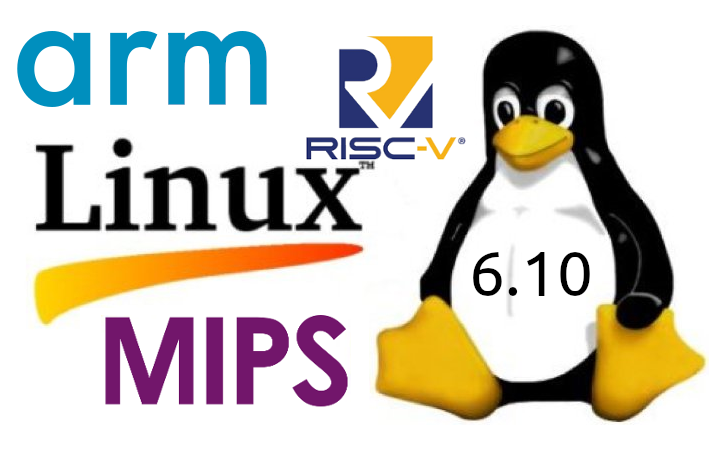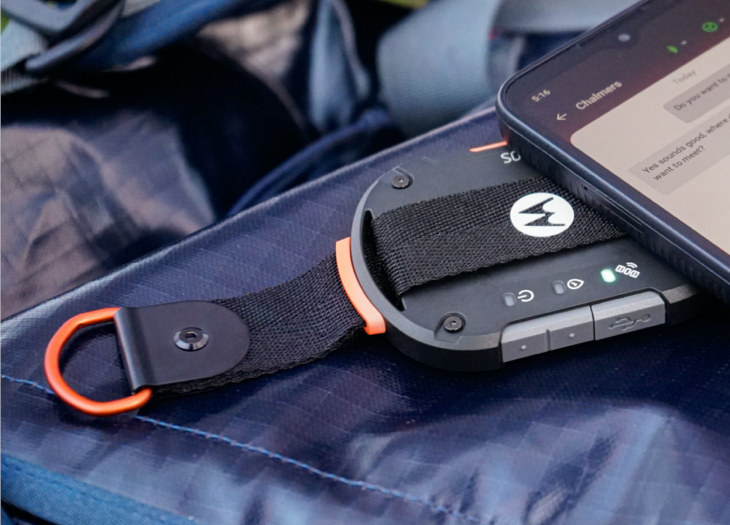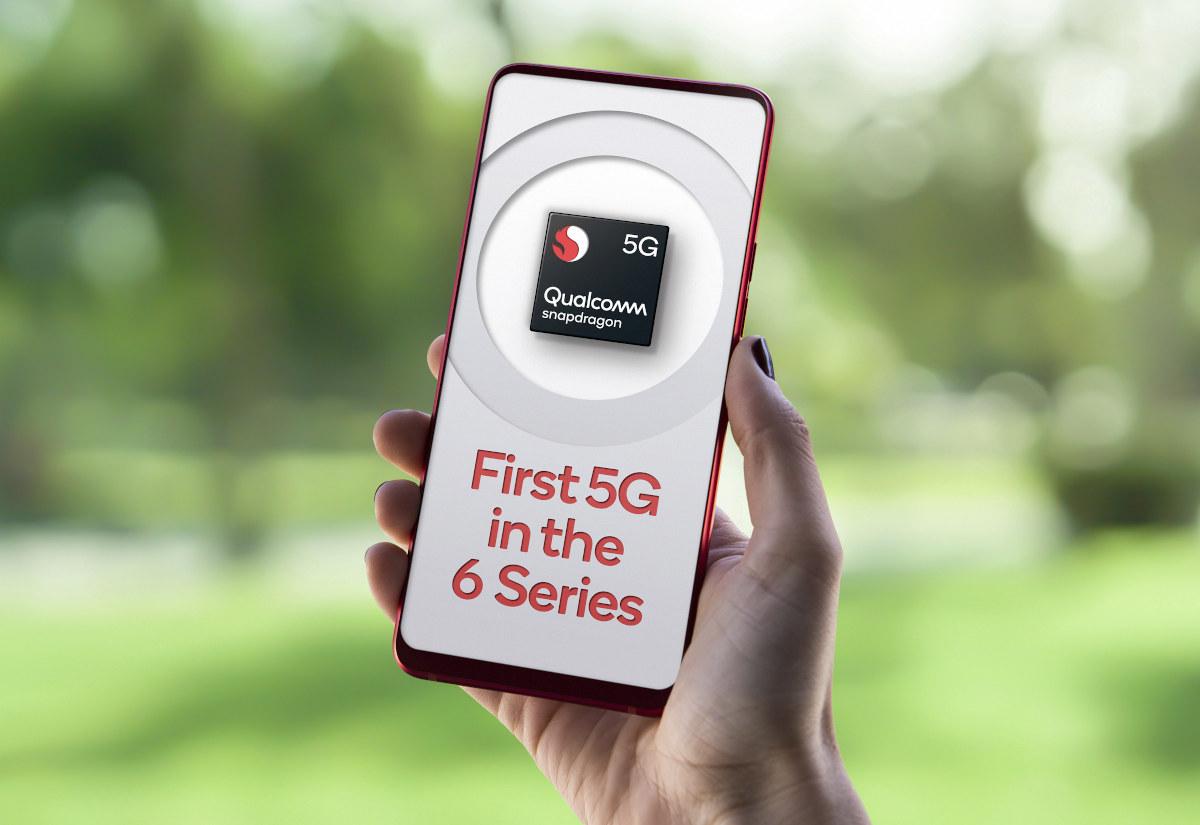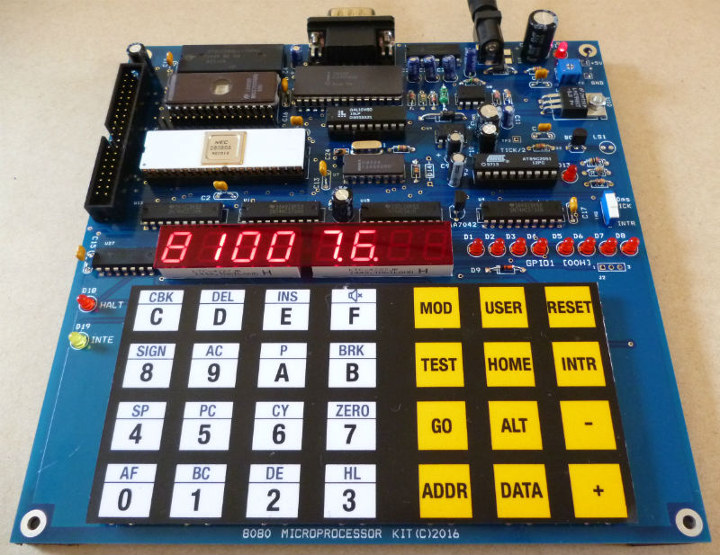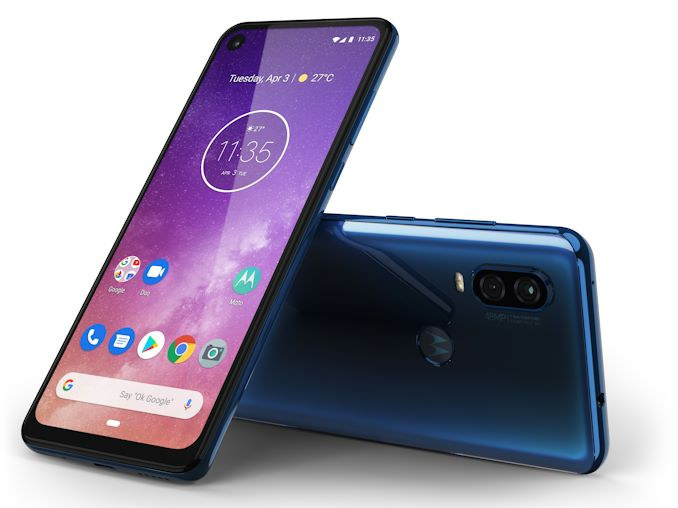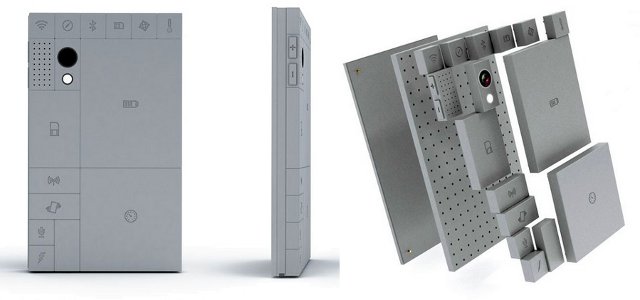Linux Torvalds has announced the release of Linux 6.10 on LKML: So the final week was perhaps not quote as quiet as the preceding ones, which I don’t love – but it also wasn’t noisy enough to warrant an extra rc. And much of the noise this last week was bcachefs again (with netfs a close second), so it was all pretty compartmentalized. In fact, about a third of the patch for the last week was filesystem-related (there were also some btrfs latency fixes and other noise), which is unusual, but none of it looks particularly scary. Another third was drivers, and the rest is “random”. Anyway, this obviously means that the merge window for 6.11 opens up tomorrow. Let’s see how that goes, with much of Europe probably making ready for summer vacation. And the shortlog below is – as always – just the last week, not some kind […]
$99 Motorola Defy Satellite Link enables 2-way satellite communications on smartphones through 3GPP NTN technology
Motorola Defy Satellite Link is a Bluetooth device that can affordably bring 2-way satellite communication to any smartphone thanks to the latest 3GPP NTN (Non-Terrestrial Network) technology implemented in the MediaTek MT6825 connecting to the Bullitt Satellite Connect platform. Satellite phones and hotspot has been around for years through products such as the Iridium Go! Satellite Wi-Fi hotspot that goes for over $1,000 without a data plan, pricing that does not make it conducive to mass adoption. But silicon vendors and phone manufacturers have started to add more affordable 2-way satellite connectivity to smartphones, for example with the Snapdragon Satellite initiative, currently using Iridium, but with plans to switch to 5G NTN in due time. Motorola Defy Satellite Link key features and specifications: SoC – MediaTek M6825 chip compliant with 3GPP R17 NTN standard (bands: 23/255/256), support for Geosynchronous Equatorial Orbit (GEO) constellations GNSS – GPS, Glonass, Galileo, Beidou Host […]
Qualcomm Snapdragon 690 5G Processor Brings 5G, Cortex-A77 to Mid-Range Smartphones
Qualcomm launched Snapdragon 855, the company’s first 5G mobile processor, in December 2018, before following up the next year with Snapdragon 865, 765, and 765G 5G mobile platforms still targetted to higher-end and premium smartphones. Qualcomm has now introduced its first 5G mobile SoC part of the mid-range Snapdragon 600-series with Snapdragon 690 5G octa-core processor featuring Cortex-A77 and Cortex-A53 cores, and a Snapdragon X51 5G modem delivering up to 2.5 Gbps download speed. Qualcomm Snapdragon 690 5G (SM6350) specifications: CPU – Octa-core Qualcomm Kryo 560 CPU @ up to 2.0 GHz, specifically 2x Cortex 77 cores @ 2.0 GHz and 6x Cortex-A55 cores @ 1.7 GHz GPU – Qualcomm Adreno 619L GPU with support for OpenCL 2.0 FP, OpenGL ES 3.2, Vulkan 1.1, and DX12 APIs DSP – 2x Qualcomm Hexagon 692 with Qualcomm Hexagon Vector eXtensions (HVX), Hexagon Tensor Accelerator, Qualcomm Hexagon Scalar Accelerator Qualcomm Sensing Hub – Ultra-low-power […]
Fullfill your Nostalgia with Development Kits based on Intel 8080, Motorola 6802, Z80… Processors
Intel 8080 processor was released in April 1974, Motorola 6802 in 1976, and people in their late 40’s, 50’s or older may have experimented with those more than 40 years. People may still have those at home, but surely it’s not possible to purchase those in 2019 if suddenly you’ve got that nostalgia feeling getting at you, right? Apparently, it is, as Wichit Sirichote, an associated professor at the Department of Applied Physics in King Mongkut’s Institute of Technology, in Bangkok, Thailand has designed a few development kits based on those older processors. Let’s take the 8080 devkit as an example to check out the features of such kits: CPU – NEC 8080 CPU clocked at 2.048MHz Memory & Storage – 32KB RAM, 32KB EPROM Memory and I/O decoder chip – GAL16V8D PLD Oscillator – 8224 chip with Xtal frequency of 18.432MHz Bus controller – 8228 chip with RST 7 […]
299 Euros Motorola One Vision Smartphone Features Samsung Exynos 9609 SoC
I find most new phones’ announcements rather boring, but Motorola One Vision is somewhat interesting as it’s one of the rare non-Samsung phones to features an Exynos processor, more specifically Exynos 9609 which has not been seen in any other smartphones so far. Its other highlight is the 48MP camera sensor normally found in premium phones, and not in a 299 Euros device. Motorola One Vision specifications: SoC – Samsung Exynos 7609 octa-core processor with 4x Cortex-A73 @ 2.2GHz, 4x Cortex-A53 @ 1.6GHz, and Arm Mali G72MP3 System Memory – 4GB LPDDR4 Storage – 128GB internal storage, microSD card slot Display – 6.3″ LCD touch screen display with 2520 x 1080 resolution (21:9 aspect ratio) Camera 48MP rear camera with OIS based on IMX586 sensor 5MP Depth sensor 25MP front-facing camera Audio – 3.5mm headphone jack Wireless connectivity Cellular – 1x nanoSIM + 1x nanoSIM/microSD hybrid 802.11ac Wave 2 Wi-Fi […]
Linux 4.12 Release – Main Changes, ARM & MIPS Architectures
Linus Torvalds has just released Linux 4.12: Things were quite calm this week, so I really didn’t have any real reason to delay the 4.12 release. As mentioned over the various rc announcements, 4.12 is one of the bigger releases historically, and I think only 4.9 ends up having had more commits. And 4.9 was big at least partly because Greg announced it was an LTS kernel. But 4.12 is just plain big. There’s also nothing particularly odd going on in the tree – it’s all just normal development, just more of it that usual. The shortlog below is obviously just the minor changes since rc7 – the whole 4.12 shortlog is much too large to post. In the diff department, 4.12 is also very big, although the reason there isn’t just that there’s a lot of development, we have the added bulk of a lot of new header files […]
Google Unveils Android 5.0 Lollipop, Nexus 6 Smartphone, Nexus 9 Tablet, and Nexus Player
Android L is now formally known as Android Lollipop. Since Google already released Android L preview a few month ago, we already know what’s new in Android 5.0 Lollipop with key changes including material design user interface, ART replacing Dalvik, better battery management, 64-bit support, etc… Google also announced three hardware platforms running Android 5.0: Nexus 6 Smartphone, Nexus 9 Tablet, and Nexus Player (Android TV) Motorola Nexus 6 Smartphone Hardware specifications: SoC – Qualcomm Snapdragon 805 quad core Krait 450 processor @ 2.7 GHz with Adreno 420 GPU System Memory – 3GB RAM Storage – 32 or 64 GB eMMC – No micro SD slot Display – 5.96” 1440×2560 AMOLED display (493 ppi). 16:9 Aspect ratio. Connectivity – 802.11 ac 2×2 (MIMO), Bluetooth 4.1, NFC Cellular Network (nano SIM): North America: GSM – 850/900/1800/1900MHz CDMA Band Class – 0/1/10 WCDMA Bands – 1/2/4/5/8 LTE Bands – 2/3/4/5/7/12/13/17/25/26/29/41 CA DL Bands […]
Motorola’s Project Ara Open Source Hardware Plaform for Modular Smartphones
A few months ago, I posted a video about “The Smarter Phone“, a concept smartphone that was supposed to be serviceable and upgradeable just like PCs used to be, in order to reduce e-waste among other things. Based on comments here and on Reddit, most people did not really believe the concept was feasible, practical or cost effective, myself included. Fast forward to September, a video about another concept modular smartphone called Phonebloks went viral with over 17 million views. The overall idea is basically the same, but this time there seems to be at least a mockup. Phonebloks features a base where you can attach blocks such as the display, a wifi module, processor module, bluetooth module and so on. It turns out Motorola’s Advanced Technology and Projects group has been working on something similar for a year with Project Ara, and they recently partnered with Phonebloks’ guys, since […]


